Turn your balcony or patio into a green oasis with these 100 Container Gardening Tips You Ever Need To Know!
Dreaming of a thriving garden, but you don’t have a big sprawling yard? Container gardening is your answer! This guide dives into 100 easy-to-follow tips to transform your balcony, patio, rooftop, or even indoor spaces into a flourishing garden. From choosing the perfect pot to keeping your plants healthy and happy, you’ll find all the secrets to container gardening success!
Tips for Starting Your Container Garden
1. Soil isn’t the Only Solution
Adding one-third organic matter like pine bark, leaf mold, and compost to your potting mix is an excellent way to enhance soil structure and make a more robust potting medium for your container plants.
2. Soil Amendment
Adding coconut coir, well-rotted manure, or worm castings to your soil mix enhances texture and balances pH abnormalities. You can even mix activated charcoal for plant health and to remove impurities.
3. Check the Texture
If you’re making your own potting soil, mix various components of your soil in a large bucket to make enough batches for all your pots. If you’re using a store-bought mix, ensure it’s light and loose for adequate drainage.
The best way to determine soil texture is by making its ball by squeezing your hand and then observing it. If it holds a little but cracks and crumble with touch, it’s perfect.
4. Use Lightweight Potting Mix
Heavy potting soils retain excess moisture, reducing water supply to the plants. Never use regular garden soil or soil on the ground to grow plants in containers.
5. Think Before Recycling Soil
Add two-thirds of the fresh soil when recycling last year’s potting soil. Never reuse soil that has withered, fallen plants trapped within. Soil used for the diseased plant must be used cautiously after sterilizing. As potted plants can’t derive nutrients from the soil like plants growing on the ground, it’s important to fertilize them regularly.
6. Use Slow-Release Fertilizer If You’re a Busy Person
A slow-release fertilizer enhances the bioavailability of soil nutrients, providing uniform nourishment for a longer period of time, and you don’t need to feed your plants often.
7. Fertilize Bi-weekly
If you’re not using slow-release fertilizer, feed your plants with diluted liquid fertilizer once every two weeks in half strength. For small pots that need regular watering, water weekly.
8. Water in Time
Never water before the topsoil seems dry. Water at dawn, usually whenever the topsoil goes dry. Plants in hanging baskets and moisture-loving plants are exceptions and should be watered more regularly.
9. Apply All-Purpose Fertilizer
If you’re ever confused about the fertilizer ratio, apply balanced all-purpose fertilizer like 10-10-10 or 20-20-20.
10. Use Special Formula for Flowering Plants
A nitrogen-rich fertilizer can boost leaf growth and elongated seedlings. For flowering plants to bloom prolifically, apply phosphorous-rich fertilizer.
11. Make Your Own Potting Soil
Don’t collect soil from your garden; it will harden into a compact mass that ultimately thwarts the growth. Make your potting soil using amendments like perlite, peat moss, vermiculite, coarse sand, cocopeat, and manure.
12. Pack Down Soil
Tighten the soil using your hands while filling the pot to create more space for planting medium. Leave a one-inch space below the rim so the water doesn’t spill over the edges.
13. Avoid Burying the Crowns of the Plant
Avoid burying the crowns of the plants; it’s the part where stems and roots join each other. This simple tip will prevent your plants from rotting over time.
Tips for Planting Your Container Garden
14. Arrange Your Plants
Before planting, lay out your plants to ensure they complement each other in terms of size, color, and growing requirements.
15. Check for Signs of Decay
Inspect the roots and foliage of transplants and trim off any rotten ones. Gently till the roots to break up circling roots and ensure faster establishment in a new container.
16. Plant at the Same Depth
Planting everything to the same depth prevents rotting and roots from drying out fast.
17. Fill up the Container 1-inch Below the Rim
Fill up the container up to 1 inch below the rim of the pot. It ensures maximum nutrition for the plants, and soil won’t spill every now and then.
18. Provide Proper Spacing
Container plants don’t grow as tall and spread vigorously as the plants on the ground. You can space them more closely than their garden counterparts, but always follow the spacing requirements–which you can find on various plant websites, garden books, and seed packets.
Tips for Starting Seeds in Your Container Garden
19. Avoid Overhead Watering
Overhead watering and spilling a jet of water on seedlings can scatter the germinating seeds and kill the young plants. Avoid this! Instead, water with a mister or spray bottle and spray gently. The better way is to use the “Water from below” method.
20. Let There Be Light
Don’t keep seedlings in the dark spot. Place your pots in a spot that receives filtered sunlight. Some seedlings require more sunlight to grow, so keep them in more sun but never in full, intense sun, especially if you live in a hot climate.
21. Acclimatize Before Transferring Outdoors
Expose nascent seedlings to the outside weather gradually, starting from twenty minutes a day to six hours over the course of 10 days.
22. Create a Conditioned Environment
The optimum soil temperature for seed germination is 60 to 85 F (15 to 30 C). Go with these seed germination tips if you need more help!
23. Don’t Plant too Deep
The general rule is to plant seeds to a depth twice their width. If that’s difficult for you to understand, always check out proper seed sowing depth on the packet or internet before planting.
Tips for Choosing the Right Container
24. Container Material
You can opt for any container material. It depends on your climate and needs. Terracotta pots always do well; in winter, you can cover them with bubble wrap for protection from cold. Plastic containers are perfect for those who want to move the pots often. Ceramic and metal pots look good; you can place them on the porch. Wooden planters are sensitive to changes in weather but look good; use them for indoor or balcony gardening.
25. Container Size
Large containers ensure the better survival of big plants such as fruit trees. Also, you’ll have the advantage of watering less often, but there’s a risk of root rot and slow growth as more soil holds more water.
Many plants prefer being in a slightly root-bound state, this way they grow faster. For them, always select a pot one or two sizes bigger than their root ball. Do the same thing when you’re growing perennial plants and keep repotting after every one or two years.
26. Use Self-Watering Containers…If
Self-watering containers provide moisture steadily and are great for those who forget watering or growing moisture-loving plants. Here are DIY self-watering planter ideas.
27. Drainage
Ensure the container has enough drainage holes on the underside. If not, drill some!
28. Repurpose Household Items as Pots
Just make sure they don’t come with a lead coating, as it could contaminate soil and cause health issues. Similarly, rubber and tires are bad choices for growing edibles.
29. Pots for Beginners
Plastic and fiber pots are good for beginners. They are lightweight and fairly aesthetic.
30. Choose a Style

Determine how your container will be used-whether it will be brimming with shrubs, annuals, or succulents. You can choose a traditional or a contemporary style to create different looks, from cottage garden to desert rock oasis.
31. Avoid Saucers & Shallow Trays
Because standing water attracts mosquitoes and spreads diseases, regularly remove the collected water. If you have to use a saucer, ensure a layer of pebbles so that plant roots won’t come into direct contact with accumulated water.
32. Create Color Contrast
Paint your pot in contrasting metallic shades to accentuate the foliage of plants and pastel shades to play up the bold colors of flowers.
33. Sterilize Pots Yearly
A solution of 10% bleach in water effectively eliminates fungal pathogens and diseases.
34. Fit Wire Baskets with Liners
Then, when you fill-up the soil, gently guide the plants into the liner. That way, you’ll get a lush-looking hanging basket.
35. Incorporate Containers in Raised Beds
This is a smart strategy to add height and dimension.
36. Winterproof Terracotta Pots
Paint the insides with roofing tar to prevent them from cracking under the effect of frost and cold drafts.
Tips for Selecting Plants for Your Container Garden
37. Create Balance
Choose pots according to the size of your plants and vice-versa. Small plants won’t do justice to a large pot.
38. Check the Height Ratio
Ideally, the ratio of the plant height to pot height is 2:1. When it comes to width, the ratio is 1:1½. It’s not fixed and also depends on the plant species!
39. Keep it Simple
Showy plants are best showcased in simple containers; choose ornate ones for monochromatic plants.
40. Choose Container Varieties
If you’re growing big plants or vegetables, ensure to pick varieties that are specially bred for their compact size and ability to adapt to container culture.
41. Whimsical Gardeners’ Trick
For short-term ventures, create an annual garden. It will appear for some time and look great. If you’re a busy person, growing low-maintenance perennial plants, succulents, and drought-tolerant plants is a great option, too.
42. Avoid Spreading Plants that Grow Fast
Again, if you’re a busy person! They’ll outgrow the container and require frequent transplanting. Go for compact plants.
43. Start with Mature Plants
Due to space constraints, perennials won’t grow to their full size in a container, and it takes time. If you want your pot to look brimful the first year, start with mature plants.
44. Shade Plantings
Flowers are of secondary interest in shade gardens. Use plants with unique foliage patterns for a lovely architectural appeal.
45. Choose Hardy Plants for Successful Overwintering
If you live in a region where winters are harsh, the cold-tolerant plant will grow well in containers.
Bonus Tip: To maintain year-round interest, grow plants that appear in different seasons. Spring-Summer-Fall and Winter.
46. Succulents are the Solution
These no-fuss plants crave neglect and low-key watering. They’re an excellent option for lazy, forgetful, busy gardeners and people who travel a lot.
47. Select an Appropriate Location
For windy areas like the balcony, choose robust plants like geraniums and petunias, as well as begonias and impatiens for shady areas. And, of course, plants that love dry air, like lavender!
48. One Out of Five Plants Should Support Wildlife
Plants that provide habitat for wildlife are great for the ecosystem and biodiversity. Native and non-hybrid flowering plants are often best for this purpose.
Tips to Water Your Container Garden
49. Soak Baskets in a Bucket of Water
It’s apparently the most effective way to water mosses, ferns, and plants growing in hanging baskets.
50. Flush Out the Pot with 10% of the Water
This will help flush out any salts that build up in the containers.
51. Rejuvenate Dry Potting Soil
Soak the bottom of the pot in water for a while to enable proper rehydration if the soil is extremely dry.
52. Stick the hose to the Soil Level
This will ensure a steady flow of water as opposed to aimless sprinkling; it’ll also save overhead watering.
53. Install Drip Irrigation
It enables uniform watering so that the plants can absorb gradually and have enough water for when it gets too hot. Here are DIY drip watering systems to try.
54. Be Flexible with Watering
Succulents, many perennials, and drought-resistant plants need less water than annuals, herbs, and veggies. Mature plants can last longer without water than fresh transplants.
55. Check for Signs of Water Deprivation
Shriveled, droopy leaves and petals, limp stems and discolored, papery and crisp leaves are signs your plant is screaming for water.
56. Use Moisture Tools
It’ll help to identify the moisture content of the soil so that you can water accordingly. Generally, you should poke your index finger in the pot to check the moisture level–If the top 1 to 2 inches seems dry, water again. You can also use a pencil or chopstick!
57. Every Soil is Different
For example–sandy soils are fast-draining and need watering when they dry to a depth of 2-4 inches.


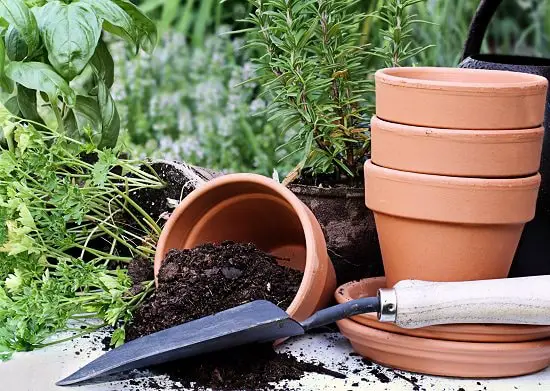
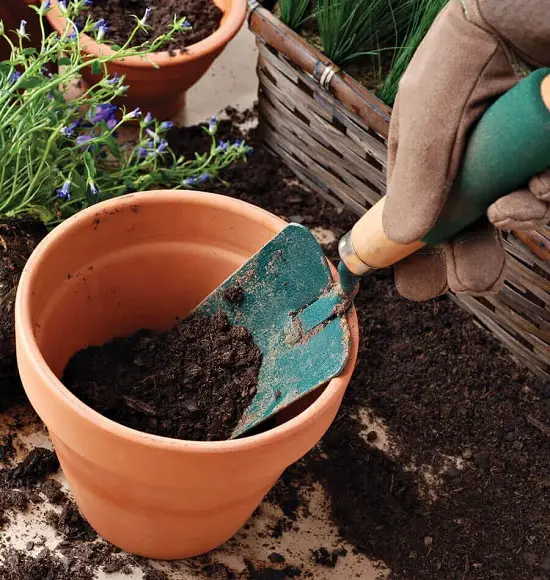

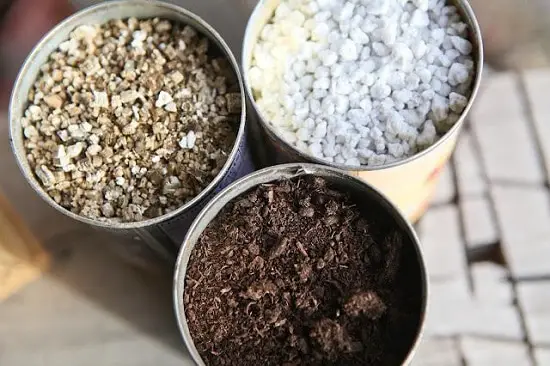

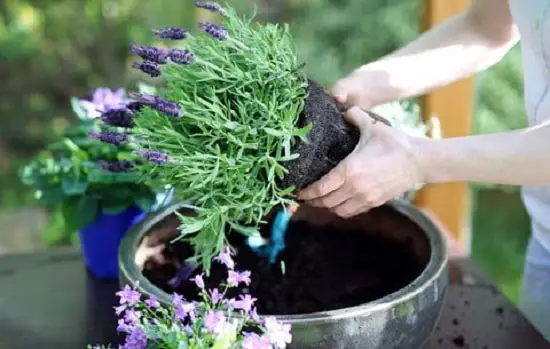

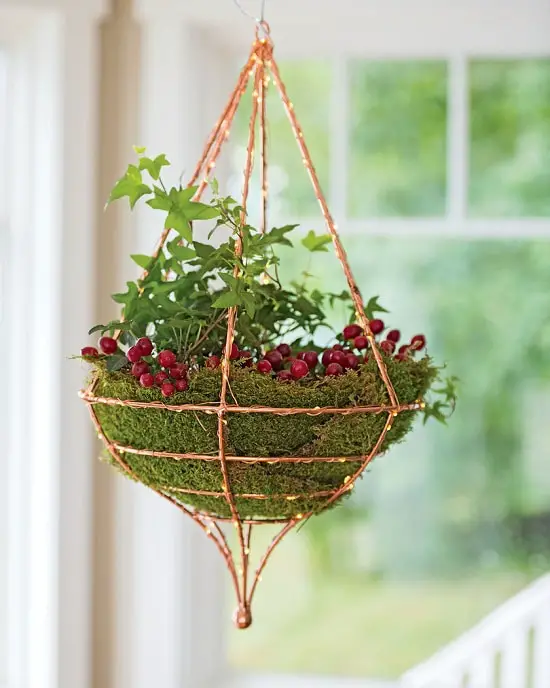
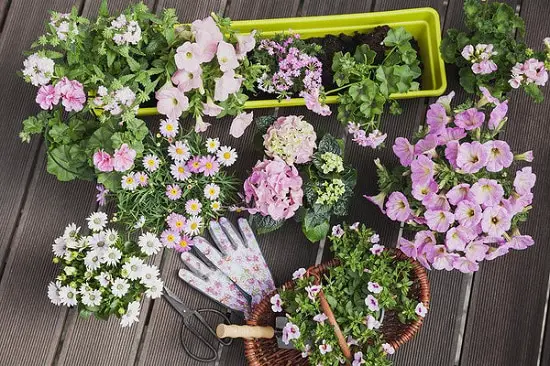
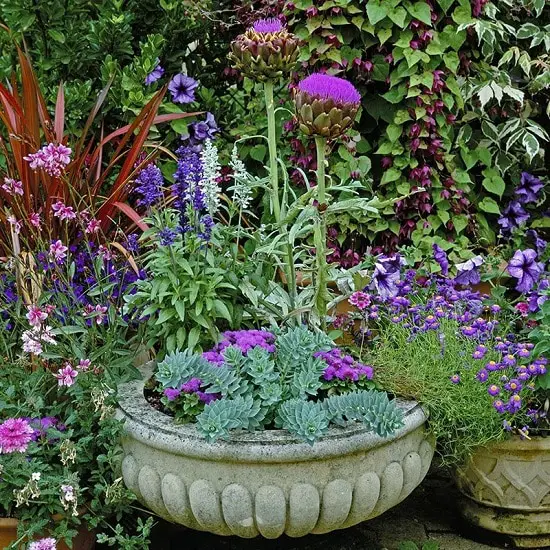
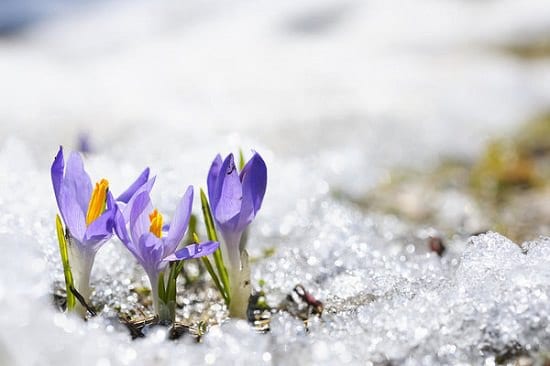
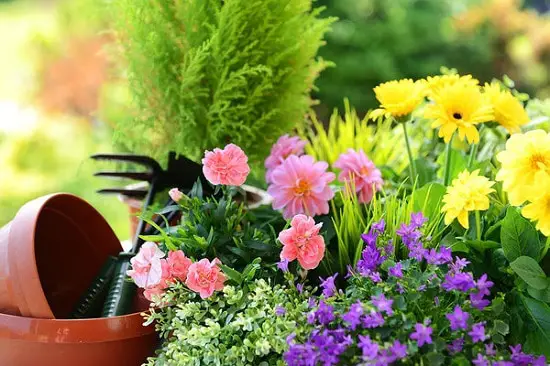
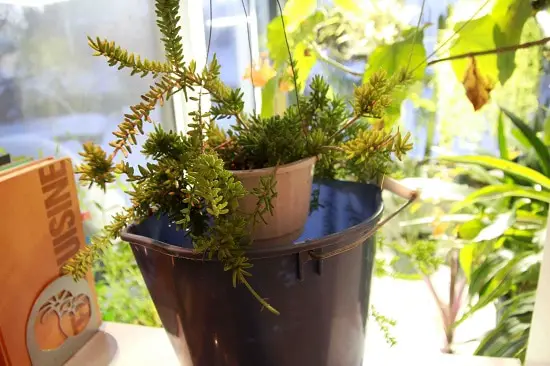
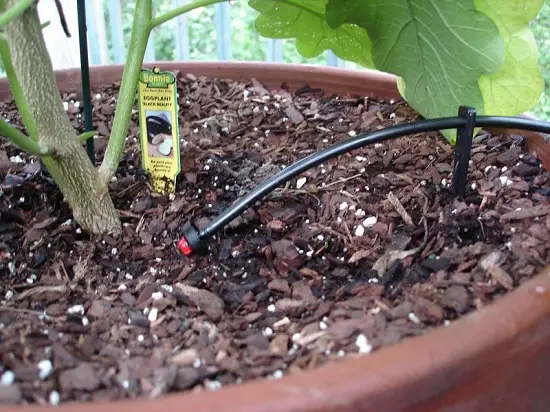
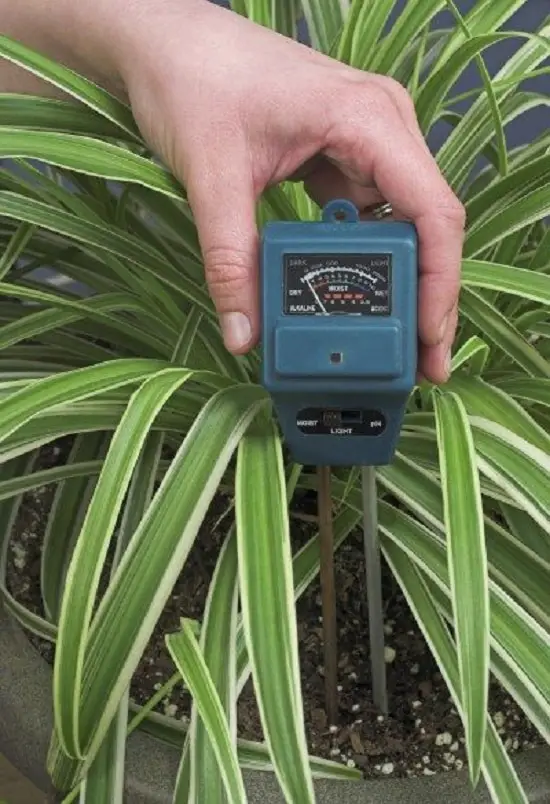

I like to put a layer of pea gravel in the bottom and then cover it with landscape fabric and then put the soil in head helps drainage